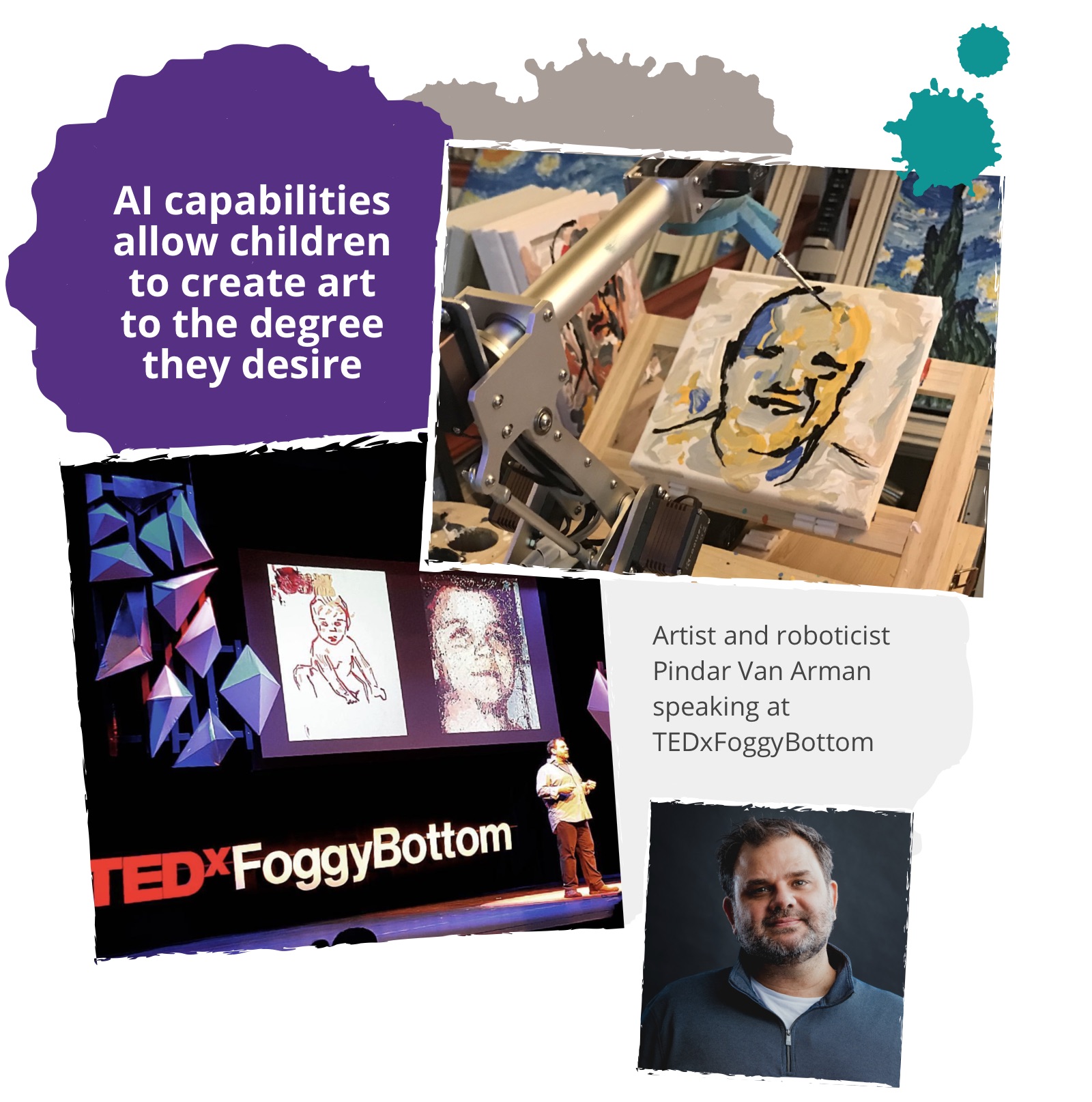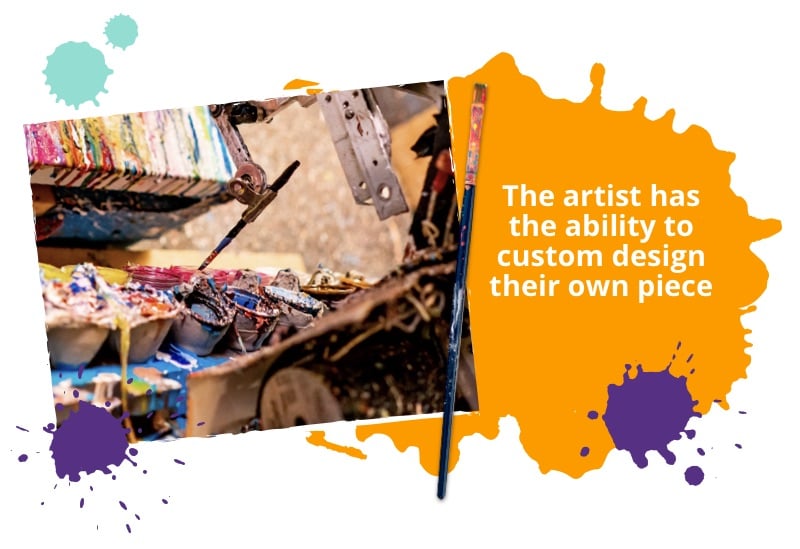The Art of Treating Epilepsy at Cook Children's

Introducing Spikelangelo, the robot that helps kids with epilepsy heal and recover through the creation of art. While Spike may be a robot, he's so much more than that. He's a pediatric art therapist who creates a whole new level of discovery, care and recovery benefits for our patients.

Fostering the creativity and capabilities of people with neurological disorders is one of the key goals of the Jane and John Justin Institute for Mind Health at Cook Children's. Since 2016, the program has invited artists with epilepsy to paint with patients, leaving their artwork to be displayed in patient care areas within the Justin Institute. The program provides an opportunity for patients to create their own masterpieces
A virtual discovery
Keeping in mind that many of the patients in the medical center are unable to leave their rooms for group art projects, members of the department have searched for ways patients can work together virtually. M. Scott Perry, M.D., Head of Neurosciences at the Justin Institute and an avid collector of art, found artist and roboticist Pindar Van Arman in 2010. Pindar designs painting robots to help humans create using robot art "assistants" and artificial intelligence (AI) algorithms that he writes himself. After acquiring one of Pindar's first pieces of art painted by using robotic assistance, Dr. Perry connected with him to begin devising a format in which robots and AI could work together with patients in the epilepsy monitoring unit and across the medical center.

While Cook Children's has long used art therapists to assist children with projects, their resources can be limited, and this program provides additional "hands" to help. Also, the physical abilities of patients vary and the robot's AI capabilities allow it to help the child create art to the degree they desire. Not only is art therapeutic, but the interaction with other children while working on projects together can be beneficial to their recovery. Multiple children across the medical center can work on a project together virtually, each contributing their own creativity.

How it works
In order to create a piece of art, the patient connects to the robot through a tablet which acts as the canvas. The artist has the ability to custom design their own piece or they can choose a design from the program's catalog. They can paint with their finger or an electronic pen just as they would if they were holding a brush. The painting robot is equipped with more than two dozen AI algorithms that help interpret and even create new artistic compositions.
The advanced settings allow the child to paint alongside the robot. The robot will follow their lead on the canvas and carry out each stroke. In this manner, the robot can help with the technical aspects of something like a portrait while also letting the user be expressive. Should the artist choose to utilize robotic assistance, any number of AI algorithms can be activated to further develop the art. The robot also has the ability to transform the style of a painting, such as giving a child's painting of a horse a touch of Picasso flair. Once the artwork is finalized, they can watch the project take shape through video.
Depending on the size and complexity of each piece, it can take anywhere from minutes to days for the robot to create a piece of art.

Spikelangelo - artist in residence
Spikelangelo is housed in a clear enclosure outside the Child Life Zone on the main floor of the medical center. This gives guests the chance to watch the robot as it paints the works of children throughout the medical center. The robot has been generously donated by Pindar's Creative Technology Foundation, and is supported through the generosity of many of Cook Children's gracious donors. AI is capturing people's excitement and imagination with its assortment of assistance features. Instead of replacing human creativity, it is enhancing it and making us more creative. Our hope is that this program will help develop the creativity that resides every child, regardless of physical abilities.
We're here to help.
If your child has been diagnosed, you probably have lots of questions. We can help. If you would like to schedule an appointment, refer a patient or speak to our staff, please call our offices at 682-885-2500.